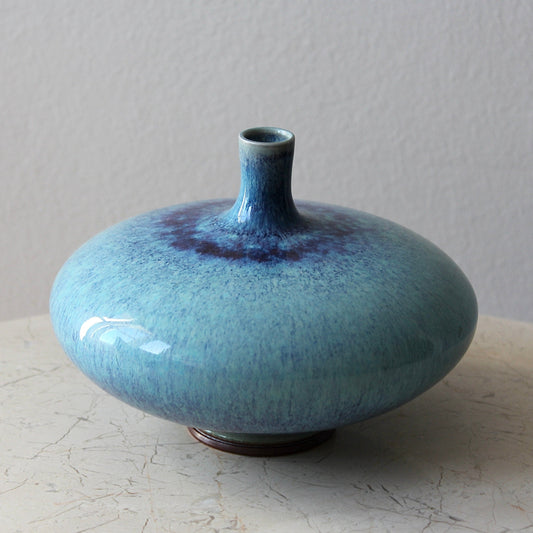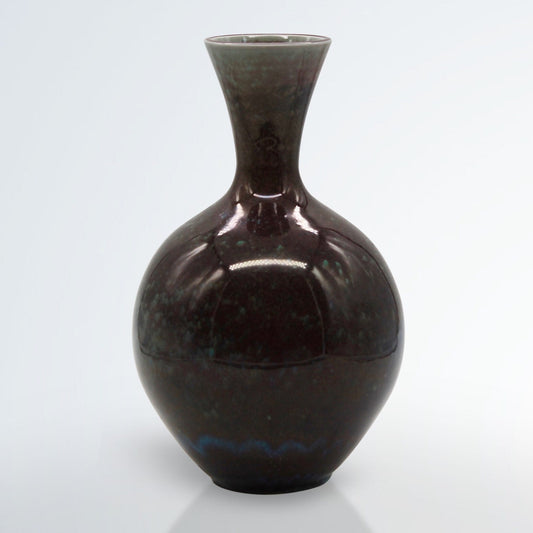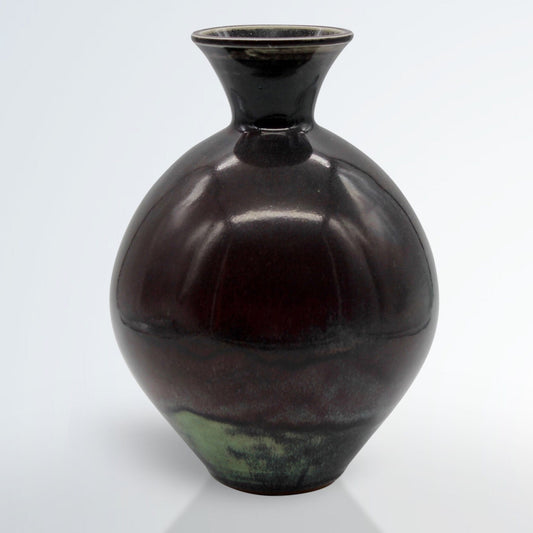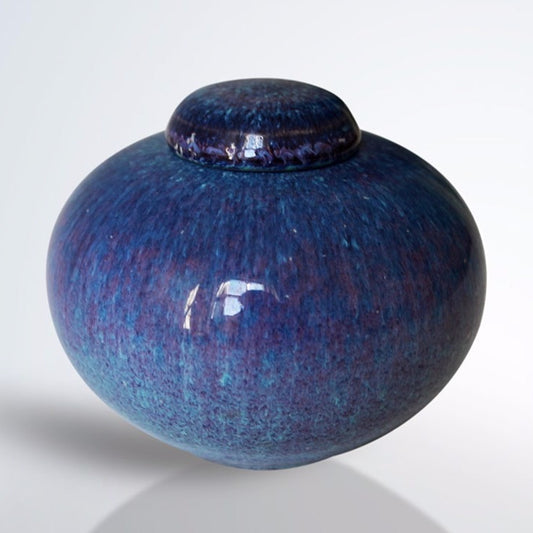Collection: Berndt Friberg



Berndt Friberg (1899-1981) was a Swedish ceramic artist praised for his outstanding technical perfection, simplicity of form, glossy glazes and attention to fine detail. Friberg, who was particularly active in the 50s, is considered a master of Modern ceramics and credited with bringing the porcelain factory Gustavsberg into the Golden Age of pottery.
At just 13 years old, Friberg began an apprenticeship at the local porcelain factory Höganäs Pottery. He went on to work as a potter in various studios, establishing a very strong technical foundation as firstly a thrower rather than a designer. In 1934 Friberg was employed by Gustavsberg to work as an assistant to renowned ceramicist and artistic director Wilhelm Kåge, who became a mentor and friend. The designer also began working closely with the multi-talented designer and painter Stig Lindberg with whom we would have his first exhibition in Stockholm. All three helped establish the creative hub of Gustavberg Porcelain, known as G Studio.
In 1944, Friberg produced his very own line. Ever the perfectionist, Friberg threw all of his own pieces and discarded those that did not meet his standard. His simple and graceful forms reflect his appreciation for Japanese and Chinese ceramic art. This influence is also evident with his haresfur and Aniara glazes, which were applied by hand and often layered to create a remarkably beautiful depth of colour. The quality of his art did not go unnoticed and after his first solo exhibition in 1951 at the Artium Exopse in Gotheburg, Friberg gained interest from many notable people. Some even became avid collectors, such as Swedish Kings Gustav VI Adolf and Carl Gustaf, Robbert Mapplethorpe and Yves Saint Laurent.
Friberg won many awards during his career. On three occasions he received the gold prize at the Triennale di Milano, won first prize at the Faenza International Ceramic Art Competition, and was awarded both the Gregor Paulsson Trophy and Prince Eugen Medal for outstanding artistic achievement. Today, his work is represented in major museum collections including those of the National Art Museums in Stockholm, Copenhagen, New York, Kyoto, and Tokyo.
 Sold
Sold Sold
Sold Sold
Sold









